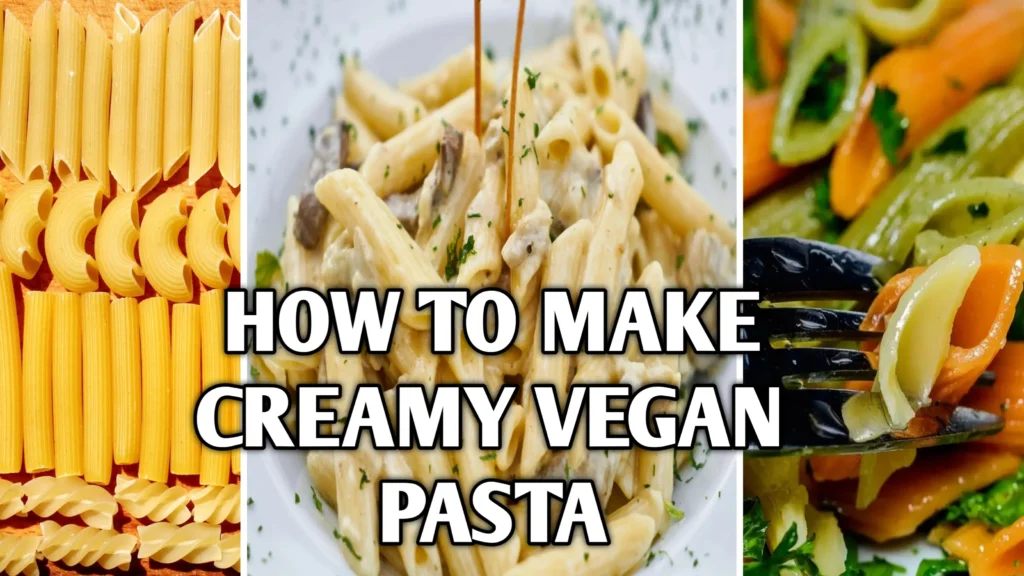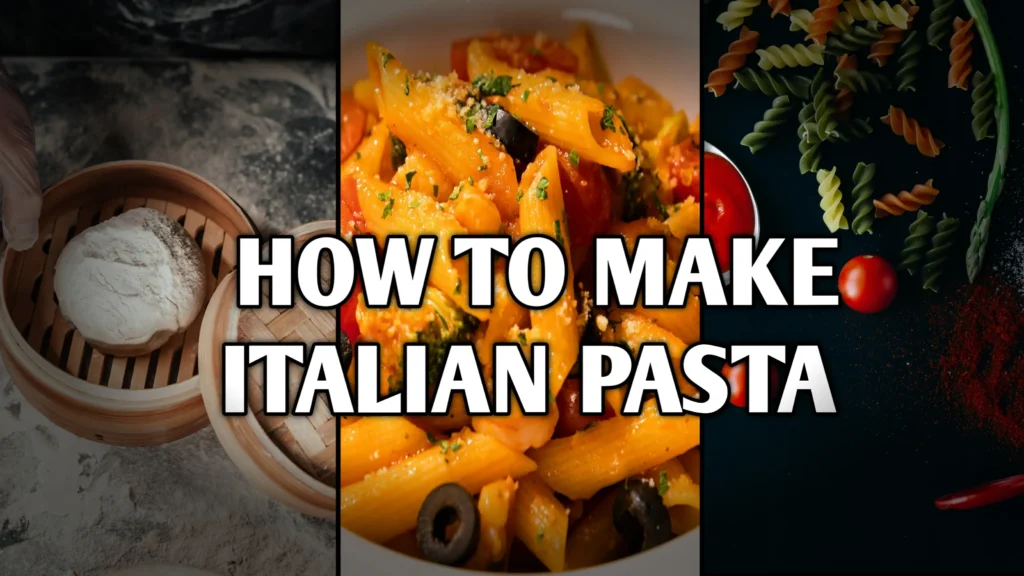
Discover the secrets behind a mouthwatering How to make Italian pasta at home recipe that will bring the flavors of Italy right into your kitchen! Whether you’re a seasoned cook or a beginner in the world of vegetarian cuisine, this guide is designed to help you create a delectable Italian pasta dish that is 100% vegetarian, without eggs or any non-veg ingredients. Get ready to impress your family and friends with your culinary skills! 🍝✨(Italian pasta recipe)
Introduction
Italian cuisine is celebrated worldwide for its rich flavors and authentic recipes. However, mastering the art of pasta making at home can sometimes feel like a daunting task. In this article, we’ll break down the process of creating an authentic How to make Italian pasta at home dish that is both delicious and easy to prepare. This post is specifically designed for those looking for a healthy, vegetarian alternative that skips eggs and any non-veg ingredients.
Along the way, we’ll share useful Italian pasta recipe tips, explore a simple Homemade pasta recipe, and offer Tips for making pasta that ensure every bite is perfection. Let’s dive into the culinary journey with step-by-step instructions and handy insights to help you master How to make pasta dough at home and discover the Best way to cook pasta for an authentic taste.
Ingredients and Equipment
Creating your perfect Italian pasta starts with gathering the right ingredients and essential tools. Here’s what you need for our How to make Italian pasta at home guide:
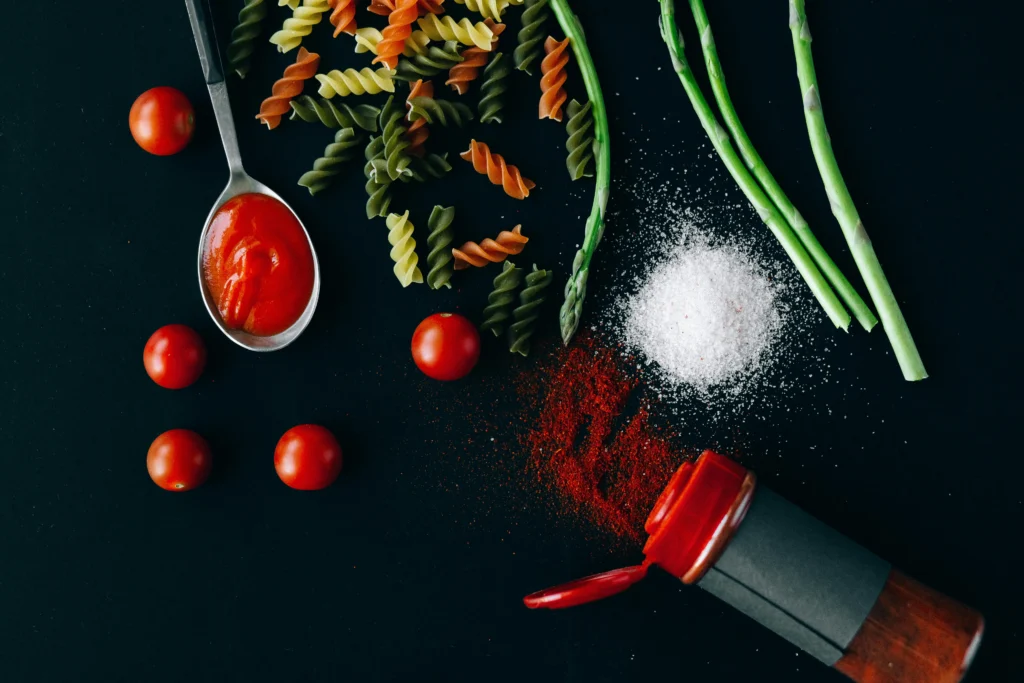
Essential Ingredients
- Flour: Use high-quality 00 flour or all-purpose flour for a smooth dough texture.
- Water: Fresh, filtered water is best.
- Salt: Enhances the flavor of your pasta.
- Olive Oil: Adds a subtle richness to your dough.
- Optional Additions: For a twist, you can incorporate spinach or beetroot puree for color and extra flavor.
Note: Our recipe is fully vegetarian and excludes any egg or non-vegetarian products.
Equipment Needed
- Large mixing bowl
- Wooden spoon or spatula
- Rolling pin or pasta machine for rolling out the dough
- Knife or pasta cutter
- Large pot for boiling water
- Strainer
- Clean working surface
Using fresh, high-quality ingredients is key.
Preparing the Pasta Dough
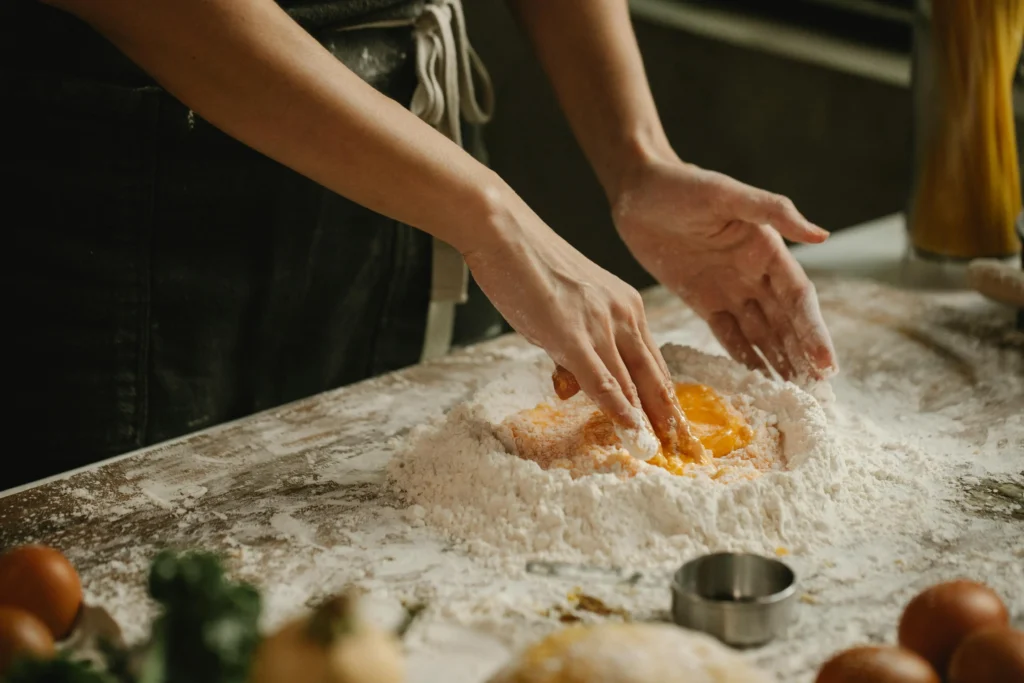
Step 1: Mixing the Ingredients
Begin by creating a well in your mixing bowl and adding the flour. The focus here is on learning How to make Italian pasta at home from scratch. Pour in filtered water gradually while stirring continuously. Add a pinch of salt and a drizzle of olive oil as you mix. The goal is to achieve a slightly sticky dough that can be kneaded into a smooth ball.
Step 2: Kneading the Dough
Kneading is an art that transforms a rough mix into a silky, smooth pasta dough. Transfer your dough onto a lightly floured surface and knead for at least 10 minutes. Use the heel of your hand to push the dough, fold it over, and repeat. The dough should become elastic and smooth. how to make How to make Italian pasta at home If it feels too sticky, lightly dust with flour, but be careful not to add too much as it can make the pasta tough.
Fun Fact: Traditional Italian chefs spend years perfecting this step! 😄
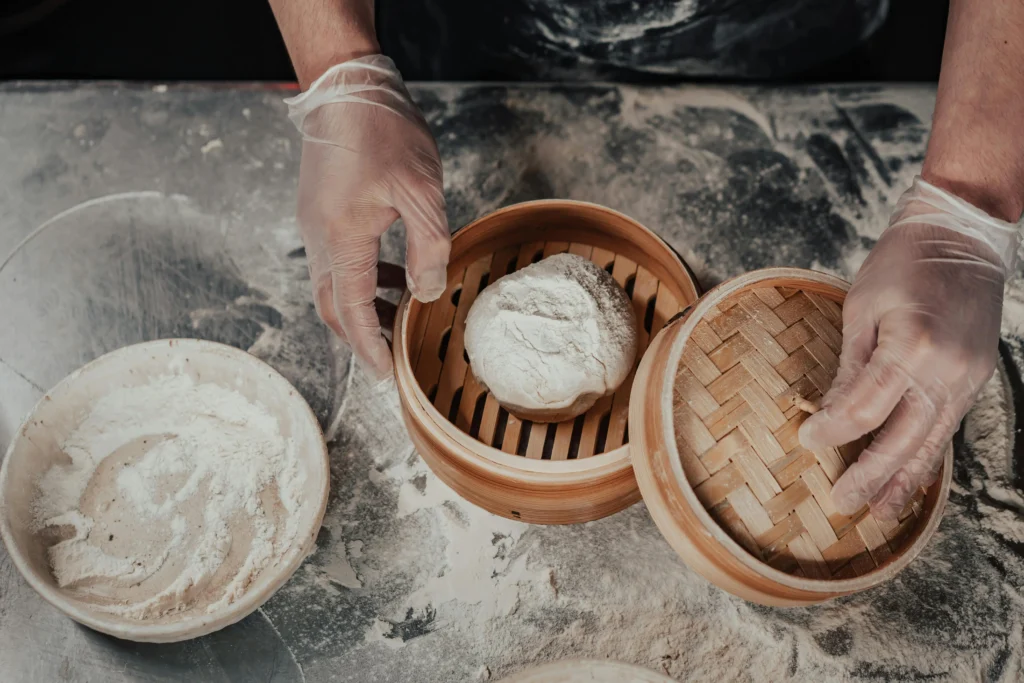
Step 3: Resting the Dough
After kneading, let your dough rest for at least 30 minutes. Cover it with a clean, damp cloth to retain moisture. Resting allows the gluten to relax, making the dough easier to roll out and shape. For a deeper flavor profile, some chefs recommend resting for up to 2 hours.
Want to know why resting dough is crucial? Read this complete guide on dough resting techniques.
Resting and Rolling Out the Dough
Step 4: Preparing Your Workstation
Before rolling out your dough, prepare a clean, lightly floured surface. Divide the dough into manageable portions. Working with smaller pieces prevents the dough from drying out too quickly.
Step 5: Rolling the Dough
Whether you’re using a rolling pin or a pasta machine, roll each dough piece to your desired thickness. For a classic pasta dish, aim for a thickness of about 1-2 mm. Remember, the thinner the dough, the more delicate your pasta will be, but too thin can result in breakage during cooking.
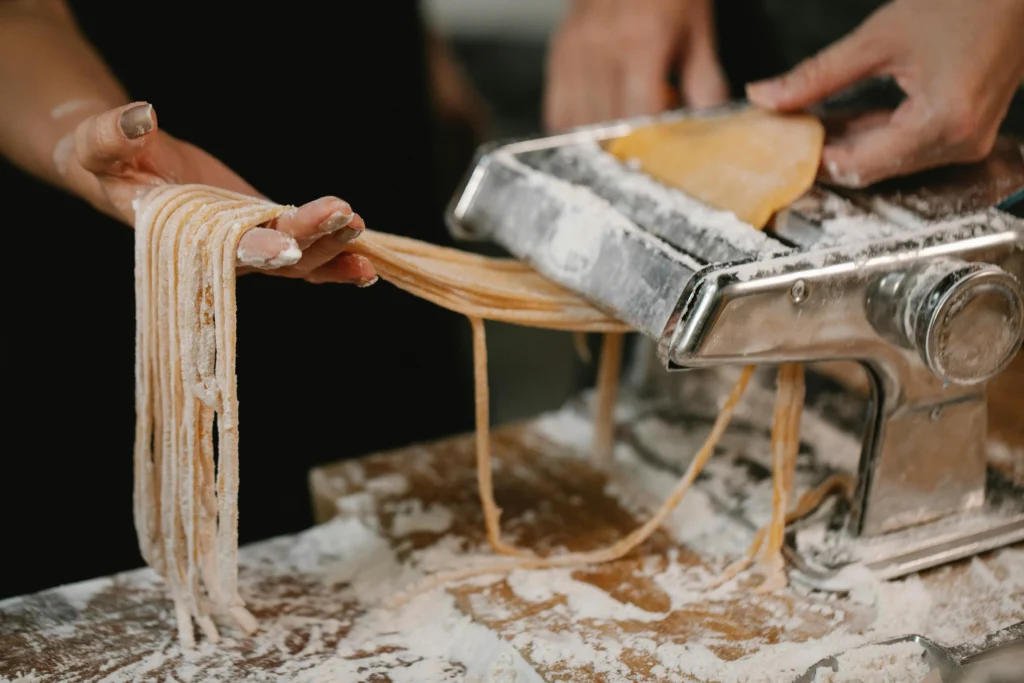
Hint: For best results, roll slowly and evenly. A pasta machine can help maintain consistent thickness, especially if you’re new to How to make Italian pasta at home.
Step 6: Forming the Pasta Sheets
Once your dough is rolled out evenly, let it rest for another 10 minutes. This short rest helps the dough relax again before cutting. Use a sharp knife or a dedicated pasta cutter to cut the dough into your preferred pasta shapes. Whether you choose to create fettuccine, tagliatelle, or even lasagna sheets, ensure every cut is uniform.
Cutting and Shaping Your Pasta
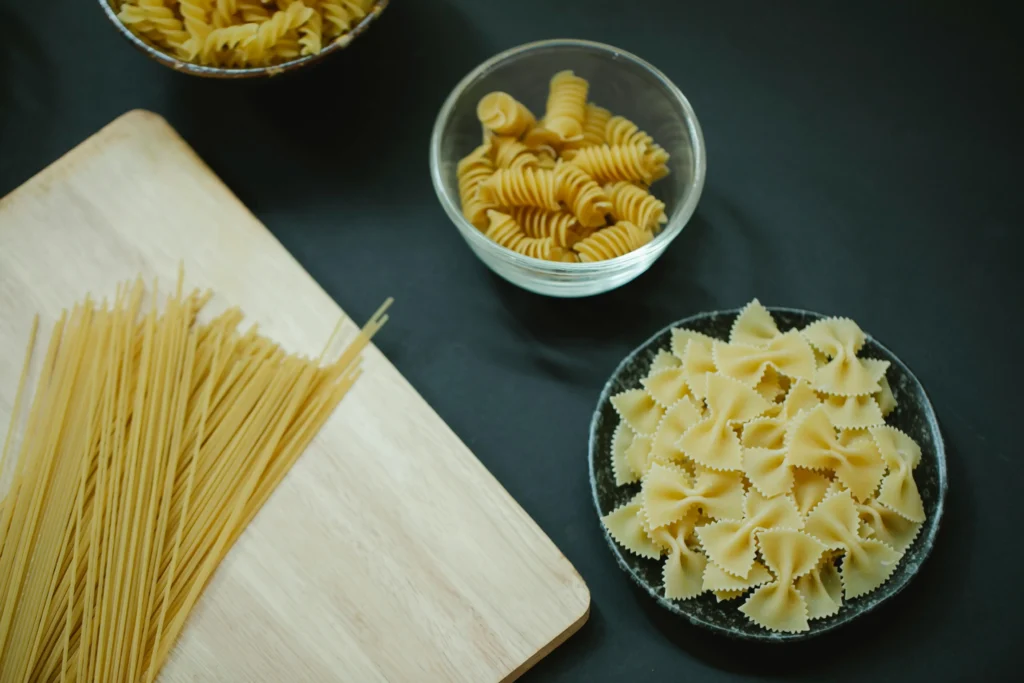
Step 7: Creating the Perfect Shapes
The beauty of How to make Italian pasta at home lies in its versatility. For a fettuccine or tagliatelle, dust the rolled-out dough lightly with flour, roll it up gently, and slice into strips of your desired width. For other pasta shapes like pappardelle or even stuffed pasta, the same basic principles apply. Each shape offers a different texture and sauce retention quality.
Expert Tip: Practice makes perfect. (How to make Italian pasta at home)The more you make pasta at home, the more intuitive the process becomes. Embrace any slight imperfections as part of the authentic homemade experience! 😊
Step 8: Drying Your Pasta (Optional)
If you plan to store your pasta for later use, lay the strips on a floured tray or a pasta drying rack. Let them dry for 30 minutes to an hour before storing in an airtight container. Drying pasta ensures a longer shelf life and can be a time-saver on busy days.
Cooking the Pasta
Step 9: Boiling Water
Fill a large pot with water, add a generous pinch of salt, and bring it to a rolling boil. The salt not only flavors the pasta but also helps it cook evenly.
Want to know the best way to boil pasta? Click here to learn more!
Step 10: Cooking Your Pasta
Gently add your pasta to the boiling water. Stir immediately to prevent sticking. Fresh pasta cooks faster than dried pasta—typically within 2 to 4 minutes. Keep a close eye on it; you’re aiming for a tender yet slightly al dente texture.
Key Reminder: Stir frequently to ensure even cooking. This step is crucial in perfecting How to make Italian pasta at home.
Step 11: Draining and Serving
Once your pasta reaches the perfect texture, quickly drain it in a colander. Avoid rinsing your pasta unless you are preparing a cold pasta salad, as the starches help the sauce adhere. Toss your pasta with your favorite sauce immediately for best results.
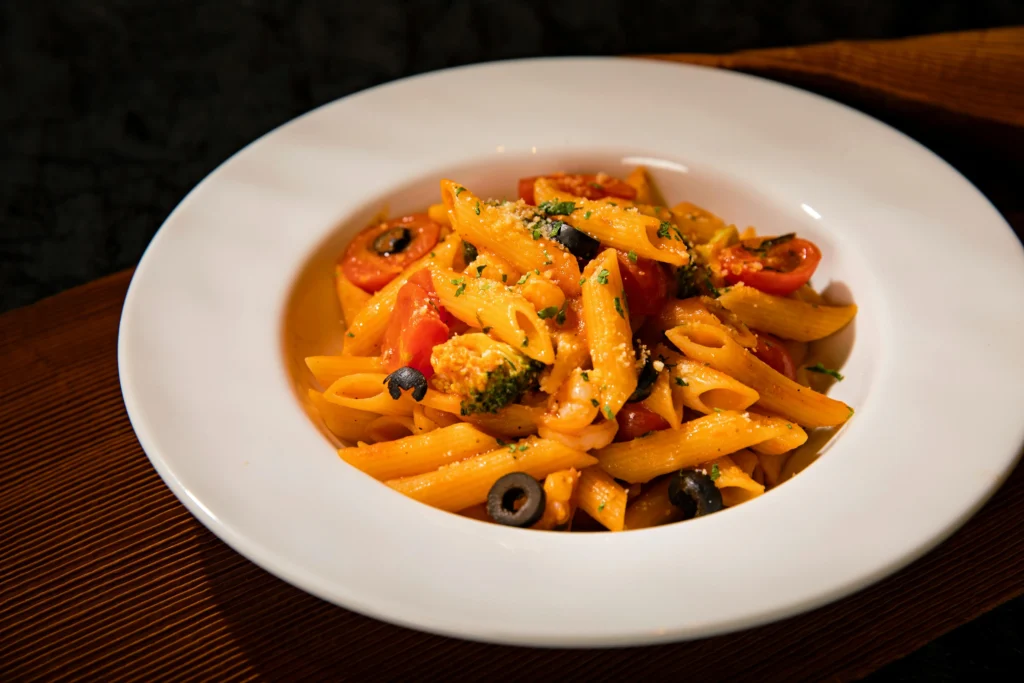
Sauce Pairings and Serving Suggestions
Choosing the Right Sauce
(How to make Italian pasta at home) A good pasta dish is only as strong as its sauce. For an authentic Italian experience, pair your fresh pasta with sauces such as:
- Marinara Sauce: A classic tomato-based sauce with garlic, basil, and a hint of red pepper flakes.
- Pesto Sauce: A fresh, green sauce made from basil, garlic, pine nuts, and olive oil.
- Alfredo (Vegetarian Version): A creamy, dairy-based sauce that uses butter, cream, and Parmesan-style cheese alternatives.
- Olive Oil & Garlic: A simple yet flavorful option that highlights the pasta’s texture.
Vegetarian Focus: All these sauces can be prepared without any meat or non-veg ingredients, ensuring that your dish is entirely vegetarian.
Serving Suggestions
- Garnishing: Top your pasta with fresh basil leaves, a sprinkle of vegan Parmesan, or crushed red pepper for an extra kick.
- Side Dishes: Serve with a crisp green salad or steamed vegetables to create a balanced meal.
- Bread Pairing: A side of crusty bread is perfect for soaking up any extra sauce.
Additional Tips for Making Pasta
Optimize Your Process
- Consistency: Aim for a consistent dough texture by measuring your ingredients accurately.
- Temperature Control: Keep your ingredients at room temperature before mixing to ensure even consistency.
- Practice: Don’t be discouraged if your first attempt isn’t perfect. Making pasta is a skill that improves with practice.
- Tool Selection: Invest in a good pasta machine if you plan on making pasta frequently. It can significantly improve the uniformity of your rolls and cuts.
- Storage: If making in bulk, let your pasta dry slightly before storing to avoid clumping. Store in an airtight container in a cool, dry place.
Enhancing Flavor Without Eggs
For a rich, flavorful dough without using eggs, rely on the natural ingredients:
- Olive Oil: Provides moisture and a subtle fruity taste.
- Salt: Enhances every flavor component.
- Water: Ensures the dough remains hydrated and smooth.
By keeping these tips in mind, you’ll achieve a perfect balance of flavor and texture every time you create your vegetarian pasta masterpiece.
Looking for the best vegetarian street food recipes in America? Don’t miss out on these delicious wonders! Check out these must-try recipes now! 🍔🌱
FAQ Section
Q2: Can I add vegetables or herbs directly into my pasta dough?
A: Absolutely! Incorporating pureed spinach or beetroot not only adds a vibrant color but also enhances the nutritional profile of your pasta. This is a popular twist in many Italian pasta recipes.
Q3: How long should I let the pasta dough rest before rolling it out?
A: It is recommended to let the dough rest for at least 30 minutes. This resting period is crucial for gluten relaxation, making it easier to roll out and shape.
Q4: What is the best way to cook fresh pasta?
A: Fresh pasta cooks faster than dried pasta—typically 2 to 4 minutes in boiling water. Stir frequently to ensure it cooks evenly and reaches a tender al dente texture.
Q5: How do I store homemade pasta if I want to make it in advance?
A: Dry the pasta slightly on a floured surface or rack for 30 minutes to an hour, then store it in an airtight container in a cool, dry place. This helps maintain the pasta’s texture and prevents clumping.
Final Thoughts
Learning How to make Italian pasta at home is an art that combines tradition, passion, and creativity. This comprehensive guide has walked you through every step—from gathering high-quality ingredients and preparing a silky dough to mastering the perfect cooking technique and pairing your pasta with delicious sauces. We hope this post inspires you to try your hand at creating an authentic, vegetarian Italian pasta dish that not only meets but exceeds your culinary expectations. 🍽️🌿
If you enjoyed this guide, don’t forget to share it with(How to make Italian pasta at home) your friends and family, subscribe to our newsletter for more mouthwatering recipes, and leave a comment below with your thoughts or questions. Your journey to creating authentic Italian pasta is just beginning—embrace the process, experiment with flavors, and savor every bite!


